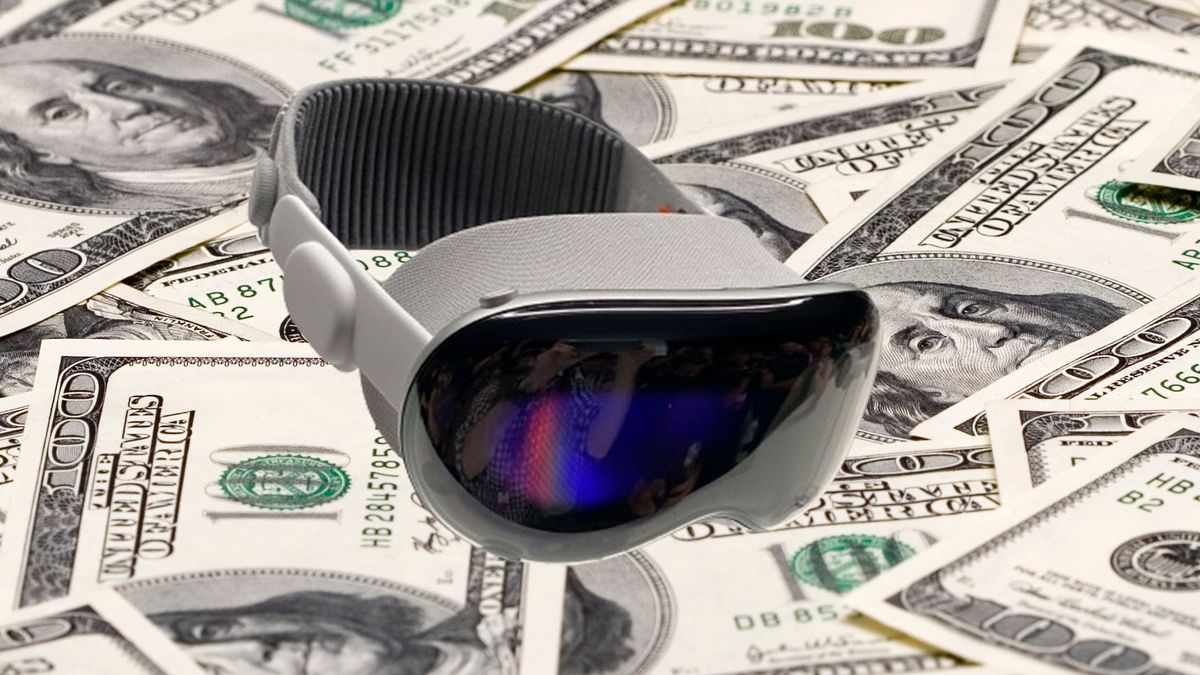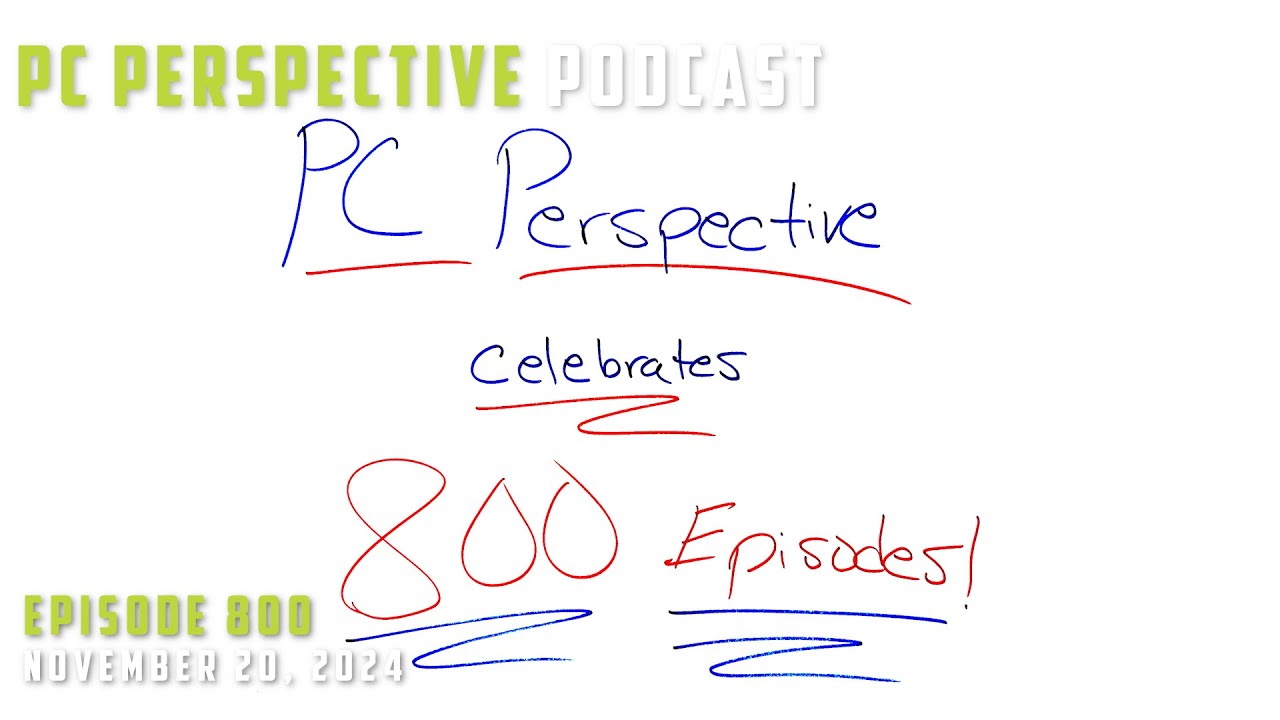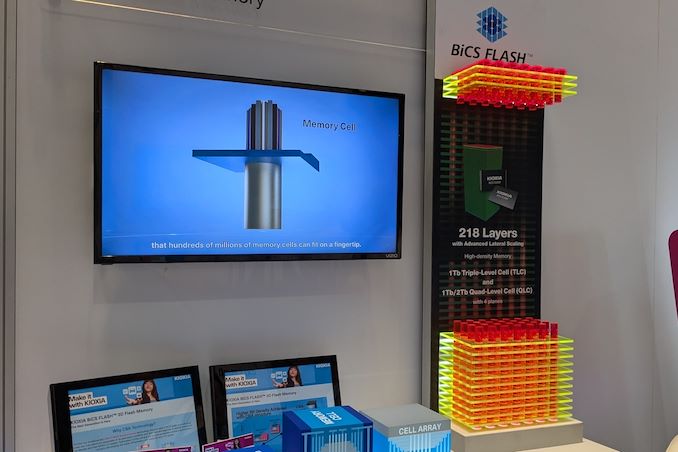When Apple Vision Pro launched late last week, there were two main topics of conversation. The first is all of the things it can do and how well it can do them. The other is the price: it starts at $3,499 with 256GB of storage and goes up from there.
That’s a lot of money, but there’s actually someone trying to charge more than Apple: scalpers. They’re often trying to start around $4,000, with some asking for as $10,000 in an attempt to make extra cash.
Scalpers have unfortunately become a fixture of major technology launches. Remember the PlayStation 5 shortages that started in 2020? Those didn’t resolve until just last year. Or what about graphics cards during the early pandemic? Those all went on third-party marketplaces as scalpers and the bots they employ have served as unwanted middlemen for financial gain.
But with Vision Pro, that doesn’t seem to be working. When I went to my local Apple Store on the evening of the launch for the demo experience, the specialist who gave me the demo told me that if I wanted the 512GB or 1TB models, I could get one immediately. That was right before the store closed.
As I write this, I could get a 256GB model from Apple and pick it up tomorrow at a store near my office or the one closest to my home. Others are available this week. Shipping might take a bit more time, as it would arrive closer to the end of the month.
And yet, scalpers are taking to eBay for a premium. Why would you do that when you could get it from the manufacturer?
“Well, that’s the beauty of open markets and speculation,” Ramon T. Llamas, a research director with the analysis firm IDC’s devices and displays team, told Tom’s Hardware.
But the Vision Pro market is a bit different than recent tech scalping. For starters, Llamas points out, a lot of people are still trying to figure out what they’re going to use a Vision Pro for. The PlayStation 5 has a very defined use case, which is part of why it was so in demand. Others may be waiting for later generations of the product and let early adopters work out the kinks.
“It’s easy to see there is some interest out there for this device, but when you’re competing against the supplier itself, Apple, with a very fixed price and everything — a very public price — and… ample supply on hand, you’re going to dive into some limitations,” Llamas said.
Which is to say, when I open eBay and Facebook Marketplace, I’m seeing a lot of listings.
This is compounded in difficulty by the degree of customization involved in buying a Vision Pro. It requires two scans from an iPhone or iPad with Apple’s Face ID. These measurements decide which size straps should come in the box, as well as which size light shield will fit your face.
What sellers are saying
Some sellers list the size they bought (presumably, revealing the size of their noggin in the process); in other cases, you may go in blind on the sizing. As long as there’s stock in an Apple Store near you, it makes far more sense, for $3,499.99, to go get it fitted to your own head. The idea that someone would want to buy an ill-fitting Vision Pro for more money doesn’t make much sense, especially because they might end up going to Apple anyway and shelling out $199 for a new light seal and cushions or $99 for a new headband.
There is a case, however, in which scalpers’ fortunes may change. While Llamas said it wasn’t a prediction, he suggested a hypothetical: what if sometime this year, stock dries up?
“That’s when you have all those eBayers and Facebook Marketplacers coming out and saying ‘hey, we got it for you in case you want it,'” Llamas said.
Sellers I spoke to said they had their reasons. One seller on Facebook Marketplace, for instance, said they originally bought two units and then couldn’t find out a use for the extra pair.
“I am selling these a[t] the same price as Apple so that if someone is interested they can test it out and purchase it without having to wait for shipping,” they said. (Their price included taxes, which might change based on where you live). They said they didn’t have any serious interest yet, though they said the listing had over 1,000 views.
Another Facebook seller trying to sell the 1TB model for $4,999, which is $1,100 more than the MSRP for 1TB, told me that they hope to use the proceeds to help pay for a prep course to help get a job following a layoff last summer.
“So if I can sell this at what I see is a fair markup (if you can’t wait for Apple to restock), I’ll use that to pay for my prep course,” they said. But they also admitted they didn’t really need the money.
“I’ll be honest I don’t NEED to do this to take the course but I’m just trying to be financially responsible,” the second seller said. “Part of me knew I wouldn’t be keeping the headset when I preordered it. Wishful thinking I guess.” As of our talk, the seller said they had settled with a buyer at $4,800 but hadn’t finalized a local meetup.
Sellers may not be in danger of losing their investment if they don’t sell, however. Apple has a 14-day standard return policy as long as you have. If people who attempted to resell Apple Vision Pro at a profit don’t make a sale, they could potentially get their money back. Both sellers I spoke to said that if they couldn’t sell, they would send their headsets back to Apple. One already printed the return label.
If not now, maybe later?
There is one group that may be eyeing these listings now. The Apple Vision Pro is available only in the United States. While Apple has said that it will bring the Vision Pro to more countries this year, some enthusiasts could potentially be willing to pay top dollar to import one. (There have been tales of people flying to the US to buy them and bring them back home.)
Alternatively, Llamas suggested that because sealed Apple products go for a lot of money on the auction block, some people may be hoarding them as collectors items. However, those aren’t there now. Well, maybe with the exception of this listing, which claims to be signed directly by Apple CEO Tim Cook on launch day at the company’s flagship Fifth Avenue store in New York City. (As of this writing, there are no bids – the seller would like $28,000).
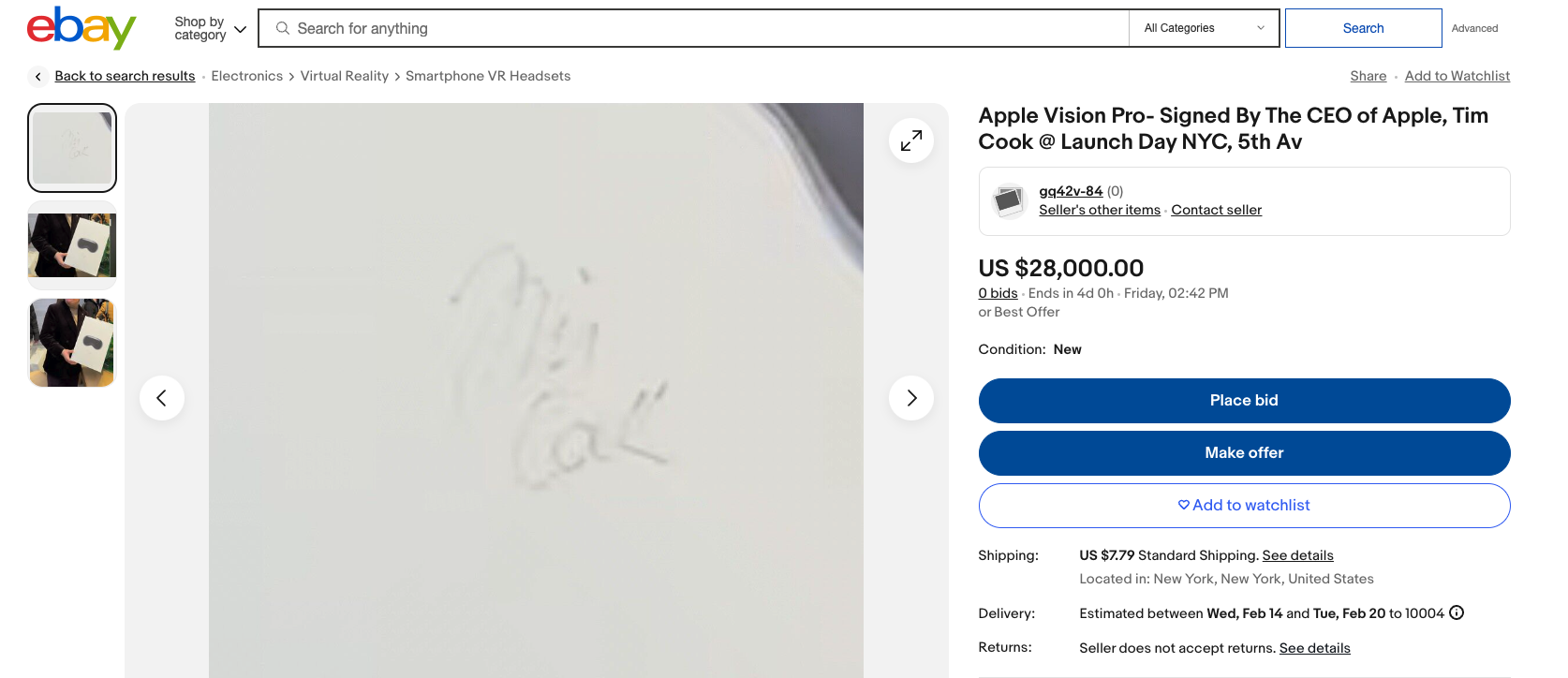
Apple didn’t respond to a request for comment. We’ll update if we hear back.
But as it stands now, the Apple Vision Pro scalping market is not the place you want to be. This is how it should be; you should be able to buy tech directly from the store without someone else making money off of it.
Yet clearly, people are going to try. But the rules for beating scalpers are the same. Use patience, buy direct. But in the case of the Apple Vision Pro, those rules are so easy to follow there really is zero reason to go through a scalper right now, unless you’re willing to pay extra for a local pickup outside of Starbucks.
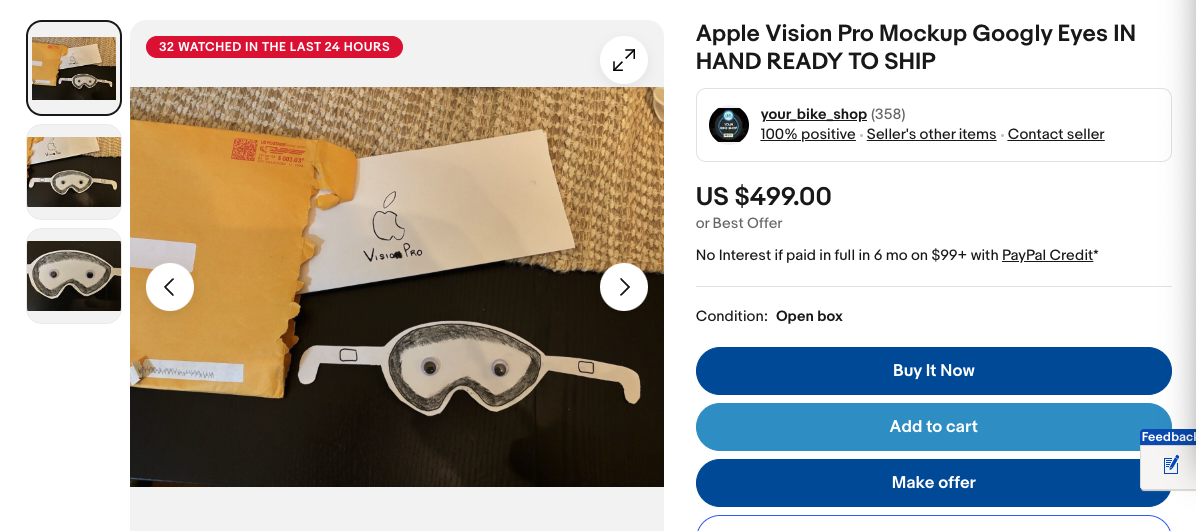
Maybe it would be easier to get one with googly eyes for $499 on eBay instead.
